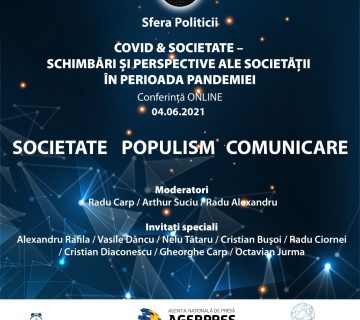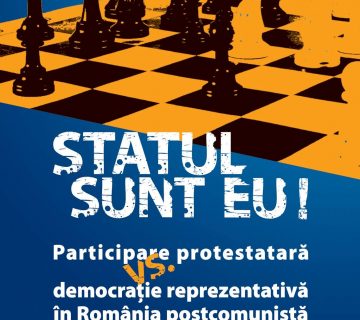Introduction[1]
In one of its reports on the activity of the Roma sociologist and activist Nicolae Gheorghe, the Romanian secret police, the Securitate, quoted him saying that “he will fight so fiercely and cannot die in peace until the Gypsies are recognised as a co-inhabiting nationality”.[2] At that time, in March 1980, the Securitate had already begun its informative surveillance of N. Gheorghe on the ground of his involvement in “suspicious relations with foreign citizens and (…) some hostile manifestations towards the regime” [relații suspecte cu cetățeni străini și (…) unele manifestări tendențioase la adresa regimului].[3] From the point of view of the Securitate, his “suspicious” relations referred to his academic contacts with Western researchers who came to Romania on various scholarships. However, the so-called “hostile” or “tendentious” activities concerned his sociological research on Roma people and his intentions to use the results of the research to influence the Romanian authorities to recognise them as a national minority. The paper will focus on the last aspect of Nicolae Gheorghe’s activity, namely that related to gaining the official recognition of Roma people as a national minority in the late 1970s and early 1980s. This recognition would have led to the emancipation of Romani people as the first step in safeguarding their integration and acceptance into Romanian society. Moreover, gaining recognition as a national minority would have ensured the civic emancipation of the Roma people.
The structure of the paper comprises three main parts. The first part will provide a general overview of the situation of the Roma people during the communist period, insisting on the arguments that justified their exclusion from the group of national minorities in communist Romania. The second part offers a short biography of Nicolae Gheorghe. In contrast, the last part considers his actions meant to build a case for the recognition of Roma as a national minority.
The Situation of Roma People in Communist Romania
The change of regime in 1948 did not significantly alter the juridic status of the Roma people. The communist regime, like the previous ones, refused to recognise them as a national minority.[4] However, Roma people found themselves in an unusual position. By law, they were Romanian citizens, enjoying equal rights with the rest of the population. Moreover, they were also counted as a separate ethnic group in official documents and population censuses. Despite this, the Romanian regime defined the Roma by their social and economic marginality. Consequently, Romani people represented “a social problem” whose “backwardness” and the supposed lack of an ethnic and cultural identity did not qualify them as a minority or, in communist terminology, as a “co-inhabiting nationality” (naționalitate conlocuitoare).
However, what Roma people qualified themselves for was the state’s social intervention in dealing with their many social, economic, and cultural problems. As a result, the communist regime approached periodically and inconsistently the so-called “Gypsy problem”. Its main focus was on the nomadic or semi-nomadic Roma, whose traditional vagrant lifestyle prevented or hindered their integration into Romanian society. The (semi)nomads could not be integrated into wage labour and, thus, could not earn a steady income. Travelling also impeded the acquiring literacy, professional training, better jobs, and higher wages.[5] Consequently, nomadic and semi-nomadic Roma lived “in misery and promiscuity, infected with social diseases”.[6] At the end of the 1970s, the Romanian authorities noted with concern that extreme poverty also reached the category of sedentary Roma.[7]
Faced with the worsening of the social, economic and cultural conditions of the Roma, the Romanian authorities devised measures that approached only superficially the causes of the so-called “Gypsy question”. In the case of (semi)nomadic Roma, the (forced) sedentarisation became the cornerstone of the communist regime’s plan to deal with Romani people’s social and economic marginality.[8] However, the forced sedentarisation did not attain its purposes as changing the Roma traditional way of living required long-term commitment, increased budget spending, and knowledge of local Roma communities that the communist regime lacked altogether. The settled Roma posed a slightly different challenge to the communist regime. From its point of view, their poverty and social marginality were mainly the result of several combined factors, including Roma people’s unwillingness to “take part in a permanent productive activity”, their involvement in criminal activities, and in activities that the Romanian regime considered “unhealthy”, such as begging and fortune telling.[9] Also, sedentary Roma were outlined for their refusal to enlist in the Army and for not paying taxes. Despite these, they were among the beneficiaries of social aid.[10] These developments only strengthened the image of Roma people as enjoying a “social parasitic lifestyle”. As a result, since the end of the 1970s, the Romanian regime started to believe that Roma people were a backward group who had no chance or slight chances to overcome their social marginality and “parasitism” any time soon. Consequently, assimilation became the perfect (economic and political) solution to the “Gypsy question”, which excluded the Roma people’s emancipation.
Nicolae Gheorghe: A Short Biography
Nicolae Gheorghe was born to a mixed Roma family on 12 November 1946 in Roșiorii de Vede, Teleorman County. His father was a Zlătar (“gold washer”), and his mother belonged to a mixed family of Vătrași (settled Roma) and Lăutari (musicians). Nicolae Gheorghe’s parents, especially his mother, tried to escape “the burden of ethnicity”. His father worked as a driver, and his mother ensured her son was clean and well-groomed and had no contact with other Roma children. When Nicolae Gheorghe was still a child, his family moved to Bucharest. This change presented him with an opportunity to fully integrate into the mainstream as he did everything possible to hide his ethnic origin and suppress the Roma part of his identity.[11] After graduating from the Faculty of Sociology of the University of Bucharest, he became a researcher at the Centre of Sociological Research in Bucharest. In an interview in 2013, he mentioned that he had started to reconsider his ethnic identity as the Romanian regime moved towards a more nationalistic stance and started unofficially to emphasise the ethnic differences among its citizens.[12] In 1974, Nicolae Gheorghe began his fieldwork in a small Roma community in Brateiu, Sibiu County, where, following Claude Lévi-Strauss’ model, he reconstructed the family trees of the Roma living there. Gheorghe met Ion Cioabă, the leader or the bulibasha of the Kalderash Roma in the Sibiu region, during his research. This meeting changed Nicolae Gheorghe’s life and influenced him to reconsider his identity. As he was no longer ashamed of his ethnic origin, Gheorghe embarked on a journey to study the Romani language, immersed himself in Roma culture, embraced the pride of his Roma identity, and lived by Roma traditions. Moreover, he witnessed first-hand in the Cioabă family how Roma people could integrate into Romanian society and still preserve their traditions intact.[13]
The (re)discovery of his ethnicity influenced Gheorghe’s research agenda and his behaviour. He began to study the Roma communities in Sibiu, Braşov, Timişoara, Turda, Teleorman, Buzău, Vaslui, and Piatra Neamţ, to whom he secured access to by making use of Ion Cioabă’s reputation.[14] At the same, as one of his colleagues at the Centre of Sociological Research and an informer of the Securitate noticed, Nicolae Gheorghe’s behaviour began to change: he let his moustache grow, he spoke Romani in public and became vocal about how the communist regime mistreated his peers.[15]
Nicolae Gheorghe and the Beginning of the Roma Emancipation Movement
Nicolae Gheorghe’s contribution to building a case for recognising Roma people as a national minority rested on two elements. One was his relationship with Ion Cioabă; the other considered the results of his sociological research about Roma people. As I have shown elsewhere[16], Ion Cioabă was recruited as an informer of the Romanian secret police, the Securitate, and he used this position to advocate for the general interests of the Roma people. Without enjoying such a privileged position, Ion Cioabă would not have been able to involve himself or support any “Gypsy nationalist” actions for the official recognition of the Roma as a national minority,[17] without any direct consequence. Consequently, the close relationship between Nicolae Gheorghe and Ion Cioabă created an unexpected opportunity for the Roma sociologist to present to the Romanian authorities a set of detailed measures meant to ease the situation of Roma people and favoured their integration into the mainstream.
Nicolae Gheorghe included the results of his fieldwork among Roma communities in two research papers, “Puncte de reper în evaluarea alternativă de politică social față de populația de țigani din România” [Landmarks in the Alternative Evaluation of Social Policy towards the Romani Population in Romania] and “Informații și opinii privind situația țiganilor din România și din lume” [Information and Opinions Regarding the Situation of Roma in Romania and the World], both dated 1979.[18] Their leading ideas became the backbone of the memoranda that Ion Cioabă, alone or with Nicolae Gheorghe, sent to the Romanian authorities at the beginning of the 1980s (1981, 1982). Moreover, the two Roma leaders and activists had the opportunity to present their proposals in October 1982 during an audience with Vasile Vâlcu, the Deputy Chairman of the State Council of the Socialist Republic of Romania.[19] Comparatively analysed, the two documents included the same course of action regarding “the integration into work and society of Roma families”. On the one hand, the memoranda underlined that Roma people were deeply connected with the mainstream, and thus, they should enjoy the same rights as the rest of the society. The sedentarisation of the Roma people was to be followed by an allotment of a place to live and work compatible with their traditional crafts. Roma children were to be provided equal access to education to ensure their better employment. Roma people were also encouraged to participate in the activities of all mass organisations (for workers, women, youth, etc.) or cultural events. On the other hand, integration was seen as an opportunity to acknowledge the cultural and ethnic distinctiveness of Romani people through their involvement in organised cultural activities or in the implementation of measures designed to address the many social problems confronting the Roma minority.[20]
Nicolae Gheorghe’s memorandum and research papers do not openly criticise Romanian policies towards the Roma people. Instead, they focus on the marginal position of the Roma people and the measures needed to be taken for their emancipation. However, Gheorghe adopted a critical stance in his letter published under the pseudonym “Alexandru Danciu” in the French daily Le Matin on 30 March 1982. The piece was read a few days later during the broadcast of Radio Free Europe. The letter was a reply to a French journalist who was attacked and badly beaten while trying to contact the Romanian dissident Vasile Paraschiv. The official explanation that he received from the authorities was that a group of “Gypsies” attacked him. Consequently, “Alexandru Danciu” rebuked the official investigation’s conclusion by showing that the Roma people were usually blamed for everything that went wrong in Romania and openly denounced the “multilaterally developed prejudice and […] racism against Gypsies” and the many abuses Roma people were subjected to by the communist Miliția. Consequently, Nicolae Gheorghe accused the communist regime of pursuing a policy of forced assimilation against Roma people who were only seen “as a residue of the past, which must disappear through assimilation into a multilaterally developed society”.[21]
The reading of this letter over the microphone of Radio Free Europe led to the intensification of the surveillance of Nicolae Gheorghe by the Securitate, who suspected him of being its author. After confirming its suspicions about the identity of “Alexandru Danciu”, the Securitate gradually focused on ending all “Gypsy nationalist” activities that Gheorghe alone or together with Ion Cioabă, bulibasha of Sibiu, had initiated for the civil emancipation of Roma people in Romania until the mid-1980s.[22]
Conclusion
The paper has analysed the contribution of the Roma sociologist Nicolae Gheorghe to the beginning of the Roma emancipation movement during the 1970s and 1980s. Based on an extensive archive research, it describes the situation of Roma people during the communist period. The many social and economic problems confronting this minority and the refusal of the communist regime to recognise them as a national minority triggered the involvement of Nicolae Gheorghe. The second part of the paper contains a short biography of Nicolae Gheorghe and his activities before his direct involvement in supporting the recognition of the Roma people as a national minority. The last section analysed the results of Gheorghe’s sociological research of local Roma communities and how they were included in official memoranda that reached (with the help of Ioan Cioaba) different Romanian party and state leaders.
These documents underlined the need for the individual and collective integration of Roma people within the mainstream while preserving their cultural and ethnic identity. Because they were addressed to the Romanian authorities, they did not contain any direct criticism of the official policies regarding the Roma people. Nicolae Gheorghe took advantage of one of his trips abroad to publish a very critical piece. In his letter, also read over Radio Free Europe’s microphone, he denounced not only the official indifference about the many social problems confronting the Roma people but also the law enforcement authorities’ many abuses directed against them.
References
Achim Viorel, “The Communist Authorities’ Refusal to Recognise Roma as a National Minority”, Baltic Worlds, Vol. 9, No. 2–3 (2018), 51–57.
Ioana Bunescu, Roma in Europe: The Politics of Collective Identity Formation (Farnham, Ashgate, 2014).
Human Rights Watch, Destroying Ethnic Identity: The Persecution of Gypsies in Romania, (Washington, D.C., Human Rights Watch, 1991).
Manuela Marin, “Failed Integration, Failed Emancipation: The Case of Roma Civic Activism in Communist Romania”, Czech Journal of Contemporary History, 3 (2023), 733–760.
Manuela Marin (ed.), Romii și regimul comunist din România: marginalizare, integrare şi opoziţie [The Roma people and the communist regime in Romania. Marginalisation, integration and opposition], (Cluj-Napoca, Mega, 2017), Vol. 1.
Oana Sandu, “Bă, de ce ești tu țigan? Cum a devenit Nicolae Gheorghe părintele activismului civic rom”, Dor.ro, 09.08.2013.
Manuela Marin (ed.): Letter from Nicolae Gheorghe (alias “Alexandru Danciu”) to Le Matin, Courage: Connecting Collections [online], last edited on 21. 09. 2018, http://cultural-opposition.eu/registry/?lang=en&uri=http://courage.btk.mta.hu/courage/individual/n50920&type=masterpieces
Manuela Marin, “«Un prieten devotat nouă»: Ion Cioabă și Securitatea comunistă”, în Lucian Vasile, Constantin Vasilescu, Alina Urs (eds.), Traversând comunismul: Conviețuire, conformism, compromise (Iași, Polirom, 2016), 361–383.
ACNSAS, Fond Documentar, dosar 144 vol. 15.
ACNSAS, Fond Documentar, dosar 8685.
ACNSAS, Fond Informativ, dosar 234356.
SANIC, fond Preşedinţia Consiliul de Miniştrii–Subsecretariatul de Stat al Naționalităților, dosar 1929/1952.
SANIC, fond Comitetul Central al PCR–Secția Organizatorică, dosar 25/1978.
SANIC, CC al PCR–Secția Organizatorică, dosar 23/1977.
NOTE
[1] The research has received funding from the NO Grants 2014-2021, under Project contract UEFISCDI no. 38/2021.
[2] ACNSAS, Fond Informativ, dosar 234356, f. 46.
[3] ACNSAS, Fond Informativ, dosar 234356, f. 1.
[4] For more details, see Achim Viorel, “The Communist Authorities’ Refusal to Recognise Roma as a National Minority”, Baltic Worlds, Vol. 9, No. 2–3 (2018), 51–57, https://balticworlds.com/wp-content/uploads/2018/09/BW_2.3_2018_Viorel_Achim_pp51-57.pdf..
[5] SANIC, fond Preşedinţia Consiliul de Miniştrii–Subsecretariatul de Stat al Naționalităților, dosar 1929/1952, ff. 29–45, 57, 70–101; fond Comitetul Central al PCR–Secția Organizatorică, dosar 25/1978, ff. 1–8 f-v.
[6] SANIC, fond Preşedinţia Consiliul de Miniştrii–Subsecretariatul de Stat al Naționalităților, dosar 1929/1952, ff. 30–31, 73–85.
[7] ACNSAS, fond Documentar, dosar 144 vol. 15, f. 24; 76; SANIC, fond CC al PCR–Secția Organizatorică, dosar 23/1977, f. 3 f; Destroying Ethnic Identity: The Persecution of Gypsies in Romania. A Helsinki Watch Report. (Washington, D.C., Human Rights Watch 1991), 22.
[8] ACNSAS, fond Documentar, dosar 144 vol. 15, ff. 1–11; SANIC, CC al PCR–Secția Organizatorică, dosar 23/1977, ff. 2–4 f–v.
[9] SANIC, fond CC al PCR–Secția Organizatorică, dosar 23/1977, f. 4 f.
[10] SANIC, fond CC al PCR–Secția Organizatorică, dosar 25/1978, f. 3 f–v; dosar 23/1977, ff. 2 v, 3.
[11] Oana Sandu, “Bă, de ce ești tu țigan? Cum a devenit Nicolae Gheorghe părintele activismului civic rom”, Dor.ro, 09. 08. 2013, https://www.dor.ro/nicolae-gheorghe-dor12.
[12] Ioana Bunescu, Roma in Europe: The Politics of Collective Identity Formation (Farnham, Ashgate, 2014), 103–104.
[13] Oana Sandu, “Bă, de ce ești tu țigan?” [online].
[14] Oana Sandu, “Bă, de ce ești tu țigan?” [online]; ACNSAS, Fond Informativ, dosar 234356, ff. 40–42 f-v, 46 f-v, 98 f-v.
[15] ACNSAS, Fond Informativ, dosar 234356, f. 98 f-v.
[16] Manuela Marin, “Un prieten devotat nouă: Ion Cioabă și Securitatea comunistă”, în Lucian Vasile, Constantin Vasilescu, Alina Urs (eds.), Traversând comunismul: Conviețuire, conformism, compromise (Iași, Polirom, 2016), 361–383.
[17] Manuela Marin (ed.), Romii și regimul comunist din România: marginalizare, integrare şi opoziţie (Cluj-Napoca, Mega, 2017), Vol. 1, pp. 40, 53–57.
[18] ACNSAS, Fond Informativ, dosar 234356, ff. 35–36 f-v.
[19] ACNSAS, Fond Informativ, dosar 234356, f. 196.
[20] ACNSAS, Fond Documentar, dosar 8685, ff. 263–265, 292–297.
[21] ACNSAS, Fond Documentar, dosar 144, vol. 15, ff. 315–318 f-v. See also Manuela Marin (ed.): Letter from Nicolae Gheorghe (alias “Alexandru Danciu”) to Le Matin, Courage: Connecting Collections [online], last edited on 21. 09. 2018, http://cultural-opposition.eu/registry/?lang=en&uri=http://courage.btk.mta.hu/courage/individual/n50920&type=masterpieces.
[22] For more details on this subject, see Manuela Marin, “Failed Integration, Failed Emancipation: The Case of Roma Civic Activism in Communist Romania”, Czech Journal of Contemporary History, 3 (2023), 733–760.



